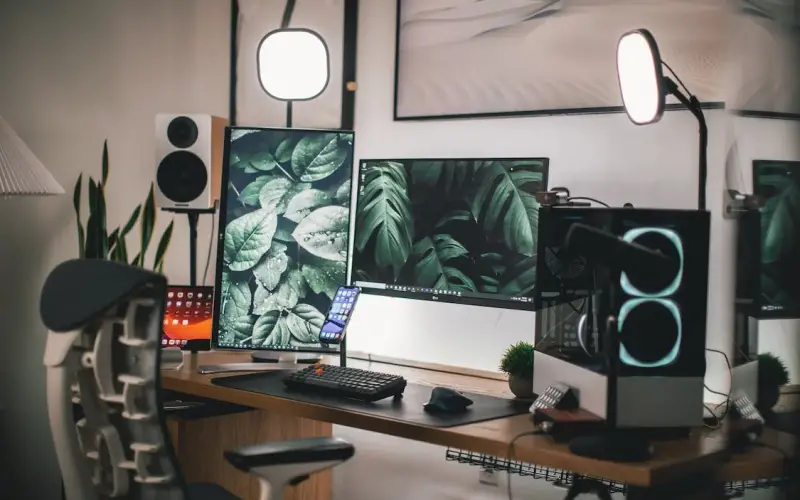In recent years, the concept of working from home has become more prevalent than ever. Whether you’re a remote employee, a freelancer, or an entrepreneur, creating the ideal work-from-home setup is essential for productivity, comfort, and overall well-being.
With the right environment, you can optimize your workflow and ensure that your home office is a place where you can thrive. This guide will walk you through the steps to create the best work-from-home setup for your needs.
1. Create a Clutter-Free Workspace
A cluttered workspace can hinder productivity. Organize your desk and storage to minimize distractions and maximize efficiency. Use cable management solutions to keep cords out of the way. You can also get rid of unused telephone books and opt out of yellow pages by unsubscribing from printed directories to reduce unnecessary clutter and waste.
2. Choose the Right Location
Selecting the perfect spot for your home office is the first crucial step. Consider factors such as natural light, noise level, and proximity to distractions. Ideally, your workspace should be in a quiet, well-lit area, separate from common household activities.
3. Invest in Ergonomic Furniture
Spending long hours at your desk can take a toll on your body. Invest in an ergonomic chair and a desk that accommodates your working style. Ensure your chair provides good lumbar support and your desk is at a comfortable height to prevent strain on your neck and shoulders.
4. Prioritize Technology
Reliable technology is paramount for a successful work-from-home experience. Invest in a high-quality computer, a stable internet connection, and any necessary accessories like a keyboard, mouse, and webcam. Consider backup solutions in case of technical issues.
5. Personalize Your Space
Make your home office a place you enjoy spending time in by personalizing it. Decorate with items that inspire you, such as artwork, plants, or motivational quotes. Personal touches can boost your mood and creativity.
6. Maintain Good Lighting and Stay Organized
Natural light is ideal, but if that’s not possible, invest in quality lighting. A combination of ambient, task, and adjustable lighting can help reduce eye strain and set the right atmosphere for work. Use a calendar, task management tools, and physical or digital to-do lists to keep track of your work commitments.
7. Establish Boundaries and Invest in Proper Sound Management
Set clear boundaries between your work and personal life. Define your working hours, take regular breaks, and communicate your schedule to family members or housemates to avoid interruptions. To minimize distractions, consider soundproofing your home office or using noise-cancelling headphones. A quiet, focused environment is key for productivity.
8. Regularly Assess, Upgrade, and Stay Connected
As your needs change, don’t hesitate to upgrade your home office setup. Invest in technology, furniture, and accessories that support your evolving work requirements. Working from home doesn’t mean isolation. Stay connected with colleagues and peers through video meetings and instant messaging to maintain a sense of community.
Consider Good Equipment
When it comes to setting up the best work-from-home environment, the choice of equipment plays a crucial role in ensuring productivity, comfort, and efficiency. Here’s the equipment you should consider for an optimal work-from-home setup:
1. Computer:
Invest in a reliable, up-to-date computer that suits your job requirements. You can either consider a laptop for flexibility or a desktop for power, depending on your needs. Ensure your computer has sufficient processing power, memory, and storage to handle your tasks smoothly.
2. Internet Connection:
A stable, high-speed internet connection is non-negotiable for remote work. Ensure you have sufficient bandwidth for video conferences, file transfers, and other online tasks. Use an Ethernet connection for even more stability, if possible.
3. Monitor:
If you use a laptop, consider adding an external monitor. A larger screen can improve your productivity and reduce eye strain. Look for a high-resolution display with good color accuracy, especially if your work involves graphics or design.
4. Keyboard and Mouse:
Ergonomic keyboards and mice can enhance your comfort and reduce the risk of repetitive strain injuries (RSI). Consider a mechanical keyboard for a tactile typing experience and an ergonomic mouse with customizable buttons for productivity.
5. Webcam, Microphone, and Headphones:
For video conferences and virtual meetings, invest in a quality webcam and microphone for clear communication. Ensure good lighting to enhance your video quality. Noise-cancelling headphones can help you stay focused by blocking out distractions.
6. Printer and Scanner:
Depending on your job, you may need a printer and scanner for document handling. Consider a multifunction device to save space. Opt for wireless printing for convenience. Make sure that it’s user-friendly and not complicated for troubleshooting.
7. Adjustable Desk and Ergonomic Chair:
A sit-stand desk allows you to switch between sitting and standing, promoting better posture and comfort. An ergonomic chair with lumbar support and adjustable settings is essential for long hours at your desk.
8. External Hard Drive or Cloud Storage:
Back up your work regularly. An external hard drive or cloud storage solution can protect your important files. Ensure your data is secure and easily accessible. With these, you won’t have to worry no matter how many files you need to store and recover.
9. Uninterruptible Power Supply (UPS) and Accessories:
A UPS provides backup power in case of electrical outages, protecting your work from sudden shutdowns. Consider additional accessories like a document holder, laptop stand, and monitor arm to improve ergonomics and organization.
10. Office Supplies:
Stock up on essential office supplies like notepads, pens, and sticky notes to keep your workspace organized. Have a small cabinet near your reach to stock your office supplies for easy access whenever you need it while working.
11. Webcam Privacy Cover and Security:
Use a privacy cover for your webcam to protect your privacy when not in use. Install antivirus software and keep your computer’s operating system and applications up to date to maintain security. Always make sure to update your Security system.
Conclusion
Creating the best work-from-home setup is a dynamic process that involves continuous improvement. Regularly assess and upgrade your equipment as needed to stay on top of your work and maintain a high level of productivity.
Carefully select and optimize your work-from-home equipment, and you can create a workspace that is efficient, comfortable, and tailored to your specific job requirements. A well-organized and comfortable workspace can significantly enhance your work-from-home experience and help you achieve your professional goals.







